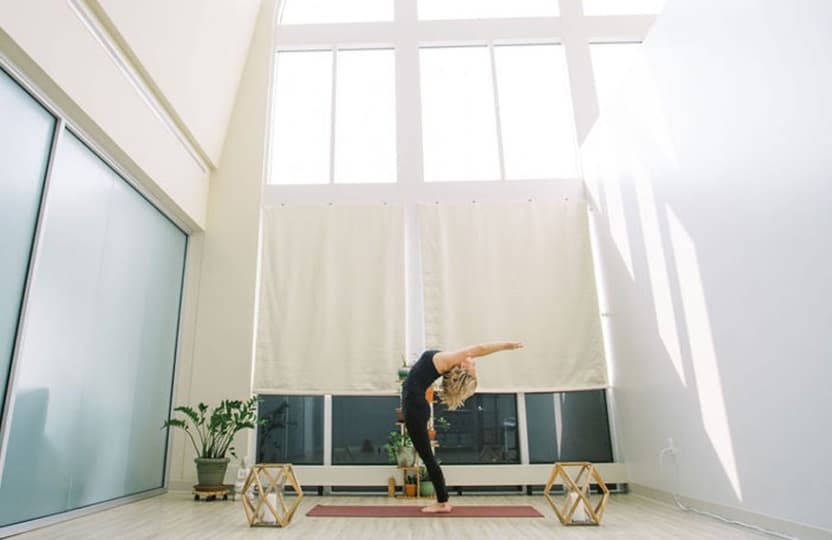
How To Practice Yoga
Share
I started practicing yoga over 25 years ago. Every day is just as important to me and magical as those first days. I discovered a sense of peace and joy hidden behind the fear, anxiety, stress, and negative thought stream. Many of us struggle with beginning, sustaining, and overcoming obstacles within a daily practice. What I have learned over the years is also written about in The Yoga Sutras of Patanjali.
Patanjali’s yoga sutra 1.14 tells us that a yoga practice should consist of.
- Practice over a long period of time
- Practice must be consistent; without interruption.
- Practice must contain love and respect.
For me, #3 has become the most important aspect of practice and life. Yoga is a relationship. It’s a relationship to our bodies, breath, thoughts, emotions, friends, families, foes, and God. All healthy relationships need to be approached with love and respect, so let’s unpack these “how to-s” to help us establish the importance of Practice.
- To practice for a long period of time, we must take a look at our yoga practice and ask ourselves, “Is my yoga practice sustainable?” Is it the kind of practice that my body and mind will adjust to over time?
At Pranayoga we do not think that any pose is particularly good or bad, but must be adapted to meet the individual where they are in the moment. We use Ayurveda and Yoga Therapy as a map to offer a variety of variations of postures, as well as change our classes seasonally, for the most effective and sustainable practice, aka movement nutrition. It like eating seasonally for a healthy diet.
You may also ask yourself,”Do I allow myself time off?” A daily practice may be misleading, if we think that we need to make it to the yoga studio every day, is it sustainable over your lifetime. #yogaeverydamnday.
Are you setting yourself up with unrealistic expectations? Making it to a group class is very important, while also learning a breathing technique or restorative posture that helps reduce stress, sleep, or energize, that you can fit into our daily routine. A balanced daily practice arises when we set aside formal community practices 2-4 times per week. The more awareness you have from regular yoga practice, the more mindful we become throughout our day.
On the other hand, if enthusiasm is flowing to make a change and begin a yoga practice, but you haven’t acted out on this idea, ask yourself, “What needs to be removed for me to make it to yoga?”
2. To be consistent in our yoga practice, without interruption, we need accountability and adaptability. Being a part of a yoga community, teacher training, or interactive online group is necessary, when starting out. I believe this to be true always. I could not have maintained a consistent yoga practice for a quarter of a decade…whoa I feel old ;-)..without the perspectives and support of teachers, friends and colleagues. This is what we call kula in sanskrit.
Patanjali also says that to practice yoga, one must have a “sincere liking of people.” I find this funny as an introvert who often replays the story of loneliness, while just wanting to be alone. One thing I loved about yoga, in the beginning, is that I got to do it alone in my living room. The real transformation and healing came from relationships with others in the room, trainings, and our kula. Community teaches us the art of authenticity. As Ram Das puts it, we are working on ourselves in front of each other. Collaboration = Consistency. Ask yourself, “Who is helping me be honest with this change I want to make?”
Consistency also means we must overcome obstacles that show up and get in our way of being consistent with our yoga practice. Obstacles such as illness, doubt, ego, laziness, and haste. Thankfully the 8 limbs of yoga become like a wheel. When we practice yoga holistically, we have many limbs to choose from, if one breaks down.
3. Lastly, and what I have experienced as the most important pillar is love and respect, bringing us full circle. Love and respect at the center of our yoga practice, is a reflection of how we will live our life on an off the mat.
Love and respect help us with the 1st and 2nd instructions given to us by Patanjali. It establishes the feeling we bring to our practice or any relationship we want to see last. It is this connection that keeps us coming back. Like attracts like. Suddenly loving and respectful people show up and help you remain consistent. That is Kula. Community helps us to overcome obstacles by our willingness to participate in the practice.
If the Yoga Sutras or Patanjali don’t resonate with you, listen to this modern day speech on Practice, by the show Ted Lasso, and tell me if you hear the importance of Practice, with a capital P.